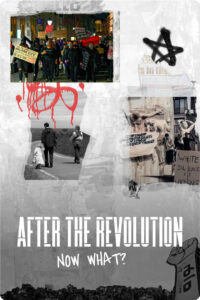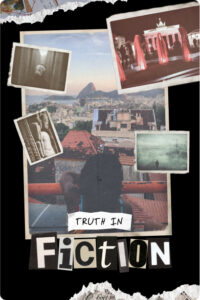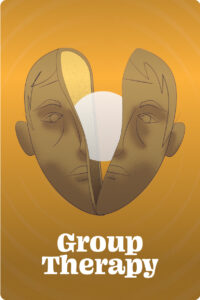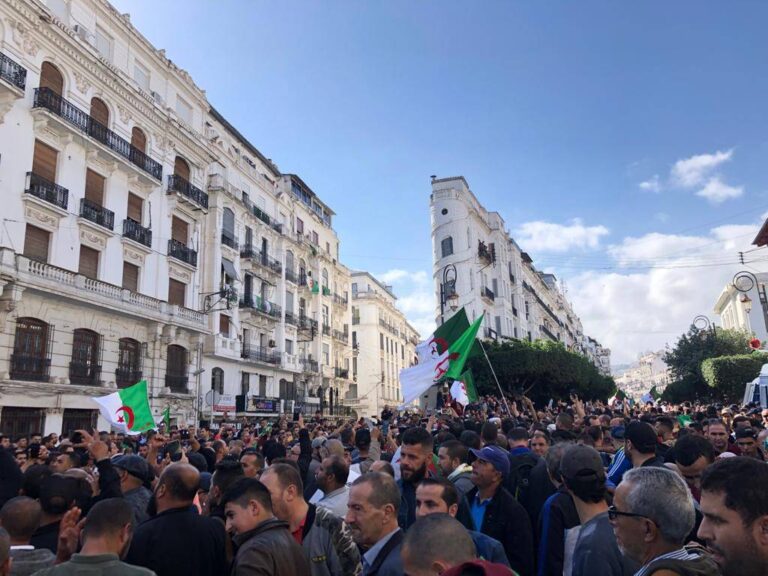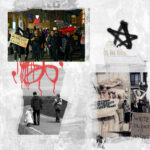Hirak in Arabic, “movement” in English. This is how we designated the popular protests in Morocco in 2016, and in Algeria in 2019. Although the two movements share the same name, their realities are different.
In Morocco, the Hirak began with the sit-ins of May 8 2016, and came to a boil with the death of a fish merchant in October 2016, who was crushed in a dumpster while trying to reclaim his merchandise, thrown away by law enforcement. The ensuing protests lasted more than 6 months.
In Algeria, a crowd of peaceful protesters took to the streets for over a year to demand the departure of President Bouteflika, and once obtained, the establishment of a second republic without the former dignitaries of the regime. The rallies in the Algerian streets have currently stopped due to the Covid-19 pandemic. The Hirak, however, is far from over.
At a time when assessments of the Arab revolutions of 2011 are being drawn one after the other, we felt it necessary to look back at these more recent and often overlooked movements.
Journalist at Radio M and Maghreb Emergent, Lynda Abou tells us about the birth of the Algerian Hirak, from the historic demonstration in Algiers on February 22 to the current situation related to the health crisis. It all started with a letter distributed throughout the country to the younger generation (02:00).
“We are living a love story with Algeria.” Samia Manel, Algerian singer and slammer, shares how, through the Hirak, she reconnected with her country, now the muse of her art. (19:34)
Finally, Dr. Aziz Ghali, president of the Moroccan Association for Human Rights (AMDH), talks about the situation in Morocco, the women of the Hirak, the coca-colas and bottled water in the streets, solidarity among Algerians, and the ongoing struggle for freedom of expression (32:43). With Eva Tapiero and Hajar Chokairi.
February 22, 2019, people were on the watch on social networks. In the morning, a small group of women went out into the streets, before being immediately arrested
Lynda Abou: “I was afraid that it would end up like the Arouch movement in 2001 or the 88 October protests did.”
Lynda Abou has always lived in Algiers. She is a journalist and works for Radio M and Maghreb Emergent. Seven years after the Arab Spring, when the wind of rebellion rose once more in Algeria, she attended the protests one after another, covering them from the forefront of the movement.
Late 2018, the tension is high around President Bouteflika’s impending 5th term. In October, a few young people including Lynda and some senior journalists met at a book fair and came together in the hope of taking action against a silenced freedom of speech and deeply embedded political corruption. In late January 2019, a letter was sent all over the country to younger generations, calling on them to take an interest in politics. Slowly, the marches and rallies began, culminating in their final point: Algiers. This protest on February 22 left a substantial mark on people’s minds and rekindled the flame of a long-buried anger.
February 22, 2019, people were on the watch on social networks. In the morning, a small group of women went out into the streets, before being immediately arrested. “We thought that would be it. Little did we know that after 2 pm, at the end of the Friday prayer, it would blow up and millions of Algerian people would be in the streets of Algiers.” Although the young woman observed the gathering from afar on social media, she is still caught up in the emotion of that historical day.
She joined the movement on February 24, rallying after the call launched by the Mouwatana, a political movement opposing the fifth term of Bouteflika. Meet-up spot at Place Audin, 12 pm. Less than forty people showed up earlier than 11 am. From the balcony of her office, overlooking the square , Lynda and her colleagues could see some journalists, familiar faces, and a few notable figures present to show their adherence to the movement. Everyone was waiting for a signal and for instructions, and discussing the events of February 22, without really knowing what to expect. Still under the emotion of that day, the crowd began to march around 11 am, ahead of time, agitated and feverish. Soon security intervened to crack down on the crowd. Police officers fired tear gas, the movement’s figureheads and even some journalists were arrested. No one ever anticipated that these images of repression would become the spark that would ignite a wave of mobilization across the country.
12 pm, an hour had passed. When everyone thought that the protest was over, an echo of voices was heard in the distance. As the police chief pointed to the adjacent street, authorities rushed towards it. Facing them: a stream of millions of Algerians, shouting with the same voice and chanting a single slogan in unison on Didouche-Mourad street, which later became a symbolic street for the Algerian Hirak. Lynda still remembers the shivers she felt in that moment. Suddenly, the situation shifted, the number of protesters exceeded that of the security forces.
After that Sunday, corporations multiplied their calls for protest, and students, lawyers and journalists began to join the movement. From that day on, Lynda began to cover all the protests, one after another, including the first Friday after the marches were suspended, on March 20, 2020, due to the health crisis. A coverage of the empty streets of Algiers.
Seeing Algerian people standing up for their rights was an immense joy for Lynda, who had held that hope for many years. With the fall of Bouteflika, she feared that the movement would die down without uprooting the corrupted system itself. She feared that it would fade away like the Arouch movement of 2001 or the 1988 October riots. “There were a lot of injuries, arrests and deaths in 1988, so we always had this fear lying underneath, but then I saw it was a very large mobilization that became difficult to repress.” The movement was amplified to such an extent that the government could no longer keepa hold on it. She released a sigh of relief at the sight of a more united and growing Hirak, determined to demand more profound change. While a resilient spirit had risen from the call her group had sent out months before , Algerian people truly became key players in Algerian politics.
Samia Manel Bezzeghoud: “I still have this spirit of combativeness that I didn’t have before the Hirak”
“There is this sense of unity in the most unlikely of moments, a lot of solidarity between us even if it isn’t there all the time. It’s beautiful that we know how to come together when we need to.”
Samia, 28, lives in Oran. She tells us how the Hirak deeply changed the ways of Algerian people, its interactions and customs, as he was completely absorbed by it, and it became the main inspiration for her music.
She didn’t go out on the first Friday of the Hirak, because like many people, she didn’t believe that Algerians would unite for the cause. The following Friday, she went out. She had seen it in the videos, but when she saw so many Algerians united, she felt an extremely strong fraternity and a lot of hope. “Especially for those of my generation, born in the 80s, we didn’t know much hope. Even though I was surrounded by strangers, I felt so safe.”
Although Samia never really viewed herself as a committed citizen, joining the Hirak was an emotional commitment before anything else, which in itself was part of a general despondency, an anger and most of all a very strong love for the nation. “We finally got the opportunity to express ourselves, something we didn’t have before. To express all the emotions that we had inside in relation to the situation.” In Samia’s case, what has really changed in her life is that the Hirak has taken a central place in her music and writing.
“We were totally captivated by the Hirak, the energy that emanated from it, whether it be on Fridays or on weekdays, we were hooked to our screens to follow and understand what was happening and to find a way to take advantage of this turning point for Algeria to see better days. I remember I was completely obsessed with the Hirak, I couldn’t concentrate on anything else, it was my priority for a long time in my life.” Friday, a quiet and uneventful day in Algeria, had become the loudest and most festive day of the year. “It has completely changed our habits and even changed the way we interact with each other.”
There is a general fear in the atmosphere regarding the health crisis and the current political situation. “Freedom of speech here has been trampled, many people have been imprisoned for simply exercising their right to speak. It has affected us all quite deeply.”
But the Hirak triggered something in people’s minds. “I’m not talking about a political consciousness, because people already had it, but in my case, I still have this spirit of combativeness that I didn’t have before the Hirak, I think it has even changed my way of expressing myself, of writing, as well as my artistic journey.” Since the Hirak, many of the songs Samia has written are about Algeria. An artistic and personal approach that allowed her to reconcile with her country. “We are living a love story with Algeria.”
The AMDH is the organization that has followed the Hirak from its beginnings to the present day, as we continue to follow and back the movement through reports, visits, and sections which are present in the region
Translation of Samia’s spoken word poem:
“Like all rebels, her beauty was candid, raw, authentic. She was not among those loves at first sight. She had that truthfulness in her eyes that everyone else shunned, that freedom, unquenchable, that her executioners envied. And every morning, as the sun sat on walls, she delicately unveiled her streets. And in her grace, she bore a message of hope to all who no longer believed. She was written in the language of the heart, laid in the depths of souls, infused herself in the skin of those who had known her. They will tell you, she had this gravity that summoned them every time she was in pain. She is a vital organ that has splintered into more than forty million pieces scattered all over the world, all withthe same pulse, all hurting at the same time, singing in unison, and coming to life again at the same time. This land is terribly fertile. At each stab she received in the belly, she gave birth to a revolution. This land is an artist, an artisan. She makes life with bits of herself, and begs, timidly, her children not to run away from her. And even when she was drowning in fear, she stood on the side of life. It is not we who inhabit Algeria, it is she who inhabits us.”
Aziz Ghali: “If the right of expression is harmed, it is certainly the case for other rights.”
“The Hirak is a movement of young people,” points out Dr. Aziz Ghali, president of the Moroccan Association for Human Rights (AMDH). “The AMDH aims to accompany [the people] in its journey and let [the young people] carry out their fight as they invent it themselves, without intervening directly in the debate.”
A fish merchant, crushed in a garbage machine: an appalling first image of the Hirak in Morocco that revived the memories of the February 20 Movement in 2011. Mass protests took place in July in the Rif region of northern Morocco. The streets were clogged up by a heavy-handed intervention of the authorities, in contrast with the hospitality of locals towards the Algerians who came from other cities to join the movement.
“People would come up to us and say: ‘You came all the way here, go stay safe in your homes and let us face the police, you are our guests! You will find a woman who will sell you coca-cola or water in any nearby street.’ Everything happened in a very spontaneous way, nothing was orchestrated or organized, but people were extremely reactive and valued the presence of the ones who had come from other cities.”
The Hirak also allowed for a significant emancipation of women. There were many on the front lines of the movement, breaking away from the stigmatizing and reductive image women are perceived to have in Morocco. Rif music was steeped in the revolt as well. Songs about the revolution would proliferate and immortalize it in the collective memory.
The Hirak Rif movement is in the continuation of the February 20 movement. The latter has cleared the public space, states Aziz Ghali, by its physical presence every Sunday in the streets, as well as by the slogans raised in every city of Morocco.
Many things can be accomplished through popular uprisings, and dignity is not something that can be achieved in one day, but it lives on in Morocco’s history. “Everyone remembers March 23, 1965, the two coups d’Etat of 1971, the protests in 1984 and 1990. Now this generation alludes to February 20. All this comes within the political landscape of Morocco.” If no claim for constitutional reform had succeeded until then, the February 20 movement finally brought change. Women’s emancipation occurred later through the Rif movement. “Many other things happened through the Rif, and we will see results sooner or later. It takes time for things to happen.” Since 2015 and to this day, the police presence is very remarkable in the Rif region.
Help us tell the world to you !
Frictions is launching its club : by supporting Frictions, you’ll be supporting a community of authors and journalists who tell the world through intimate stories!

The AMDH has followed the Hirak in its process of formulating its claims and making sure of the authorities’ adequate response to it. It also took part in a committee formed to establish a report trying to collect the facts, and covered the course of events from wrongful trials to prison incarceration. “The AMDH is the organization that has followed the Hirak from its beginnings to the present day, as we continue to follow and back the movement through reports, visits, and sections which are present in the region.”
“This is the first time an association has made a petition on the issue of torture in Morocco.” The petition stipulates 3 demands: the release of political detainees, the ceasing of the pursuit of activists in Morocco and abroad, and a response to the needs of the population. “Because even if we achieve all this, when the young people are released from prison and still do not have satisfying answers regarding their demands, there won’t be much time before they take to the streets again.”
In 2011, Morocco counted only 57 political detainees, including 7 journalists; in 2017, it counted 1,700 detainees, including 33 journalists. “Our freedom of expression is waning,” affirms Aziz Ghali. “Freedom of expression can be viewed as the thermometer that measures the other freedoms as well as the degree of democracy in any country. If the freedom of expression is infringed upon, it will certainly be the case for other rights.”

